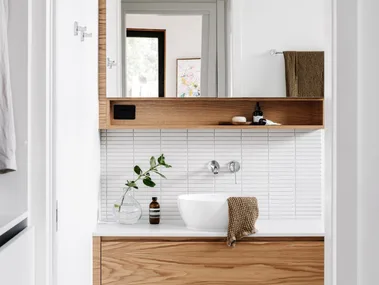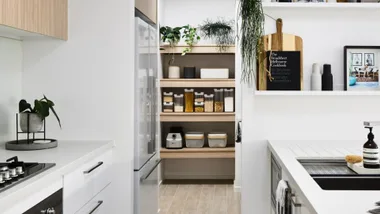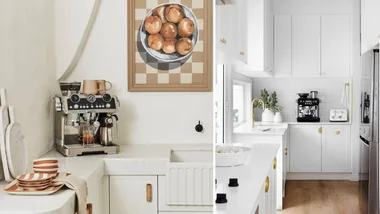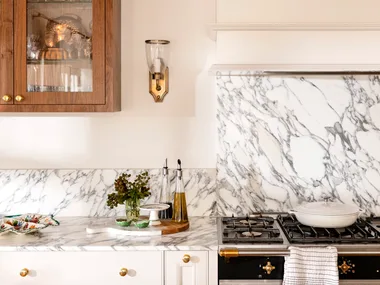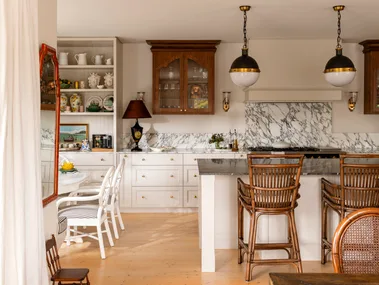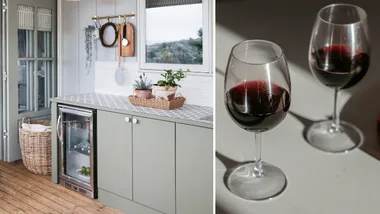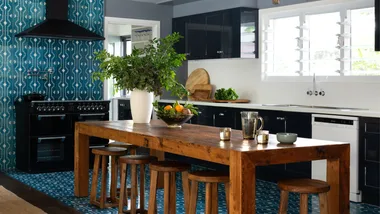You know you want your kitchen to be beautiful, but choosing the right cabinetry can be a lesson in persistence. Whittle down your choices with a look at the pros and cons of kitchen materials
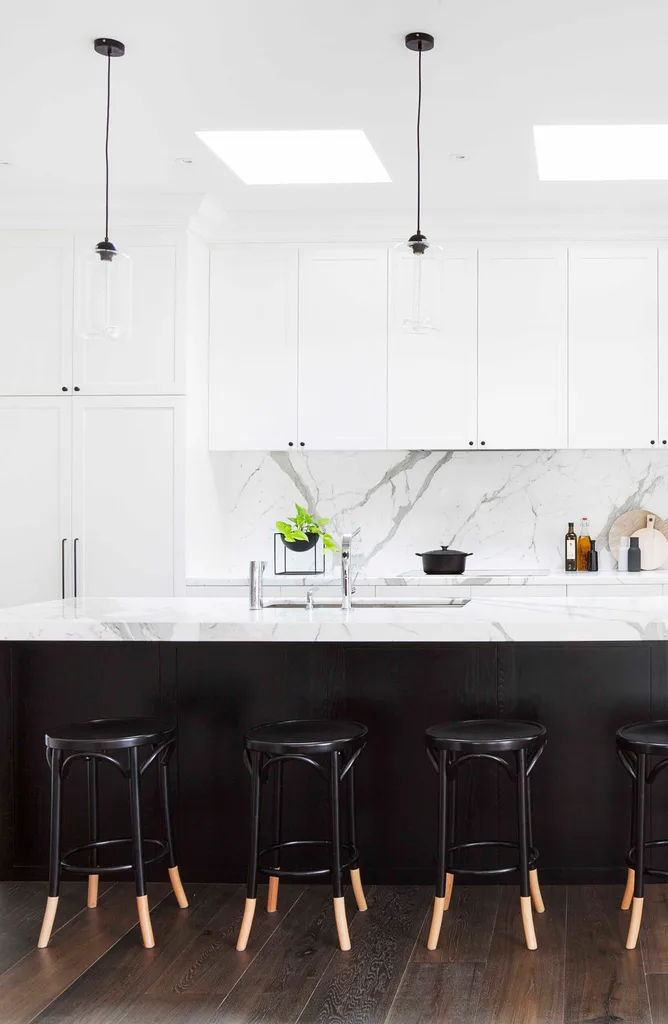
Pros: A thin layer of timber that offers the warm, natural appearance of wood without the price tag. Look for veneers with Forest Stewardship Council (FSC) certification to ensure the timber comes from responsibly managed plantations.
Cons: Timber requires sealing and may fade over time.

Pros: Hardwearing and cost-effective finish that successfully mimics the look of wood, stone or coloured gloss.
Cons: It’s not heat resistant, and laminate edges are susceptible to chipping, although an edge strip can guard against this.
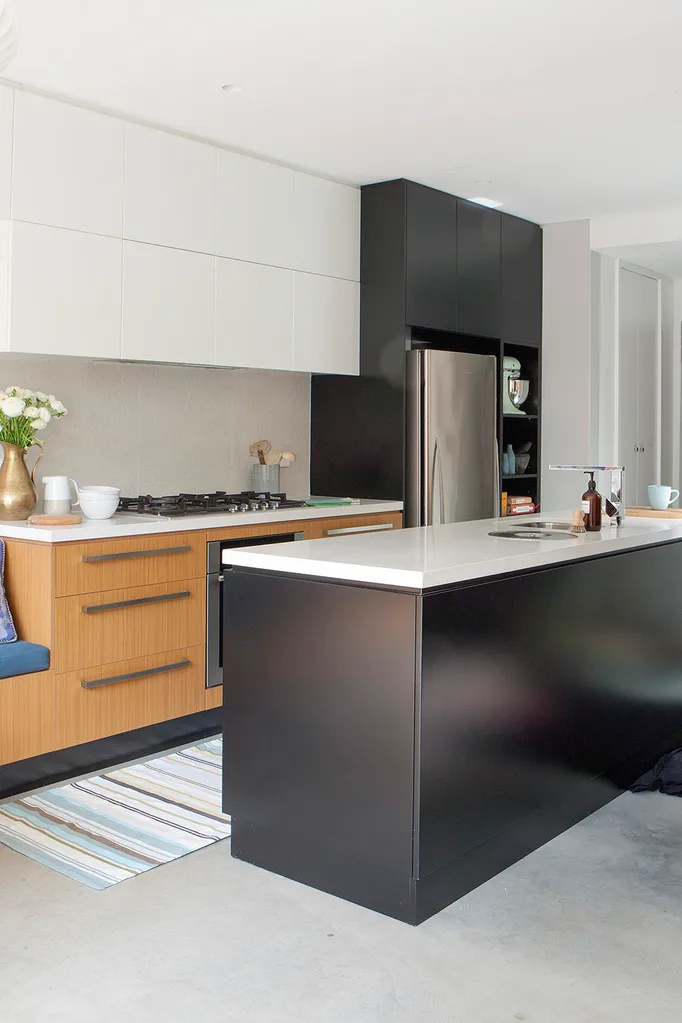
Pros: This oil-based paint mixed with polyurethane resin comes in myriad colours and provides a smooth, seamless look.
Cons: It can scratch or chip, so go for the sturdiest 2-pac finish, and consider a hard-wearing surface for areas like the kick plate.

Pros: Easy to clean, ultra modern and great for minimalist kitchens, plus it’s a winner in smaller spaces where the reflective surface can boost the light quotient.
Cons: Pricey, and even with opaque glass you’ll need to keep the content cupboards neat to prevent them looking messy.
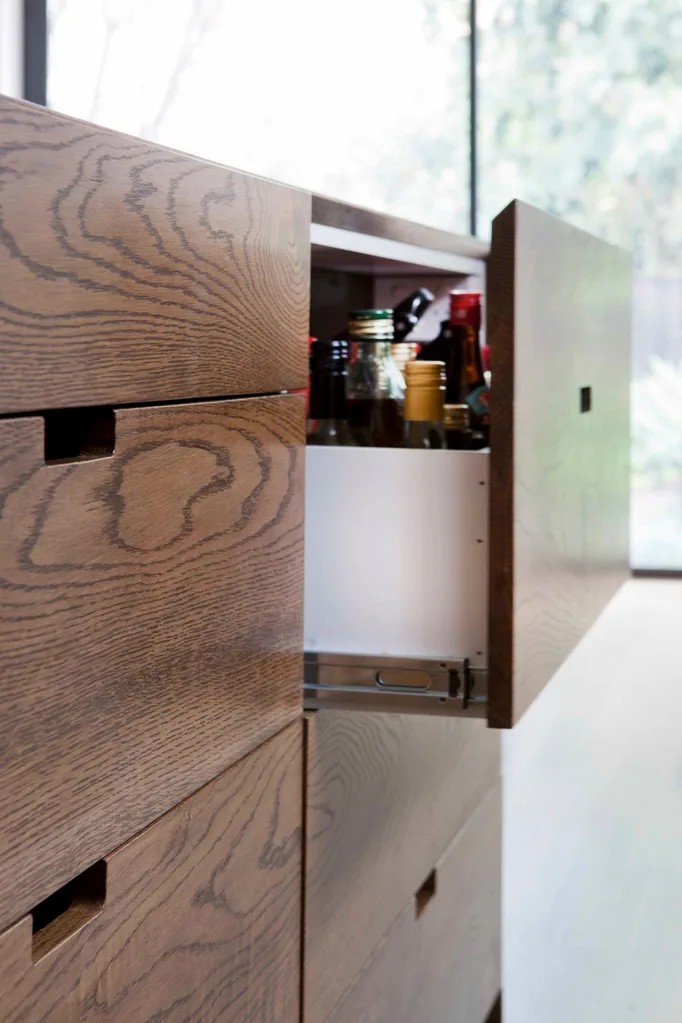
Pros: the real thing can be refinished and repainted many times over. Choose a simple profile that won’t date, and your kitchen can last you a lifetime. Opt for FSC-certified wood.
Cons: Pricey, and natural wood hues meander in and out of favour – remember orangey-pine?

Pros: An economical hard plastic which is scratch, stain and heat resistant, and can come in lots of different colours and finishes.
Cons: The colour can fade if exposed to sunlight, so ask if the product is UV-cured to protect against this.
For more kitchen inspiration click here.
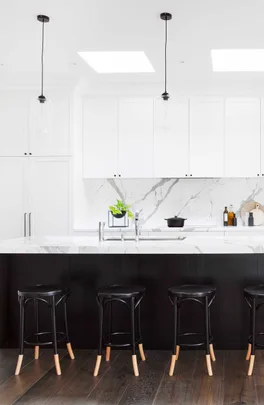 Shania Shegedyn
Shania Shegedyn
